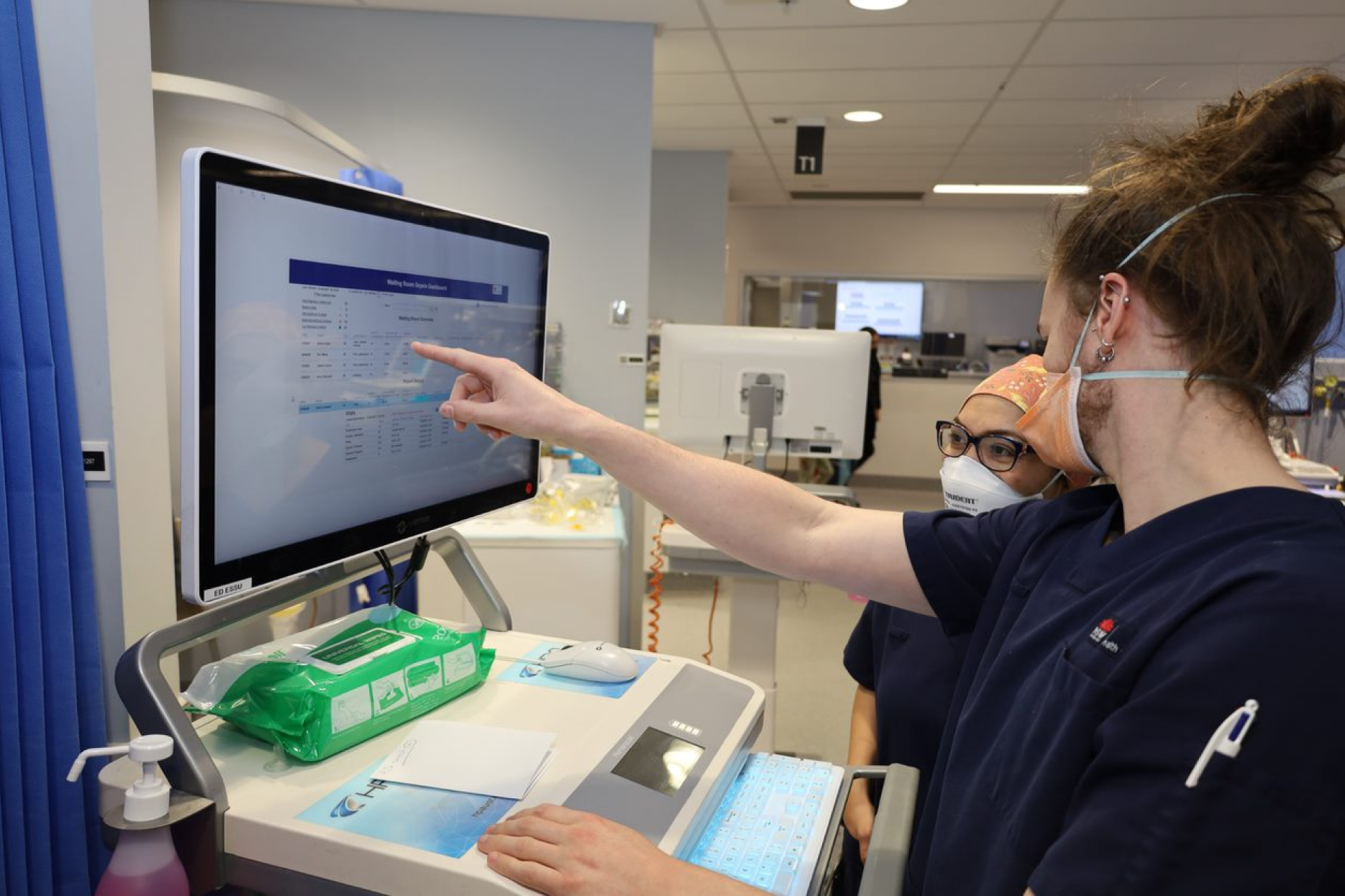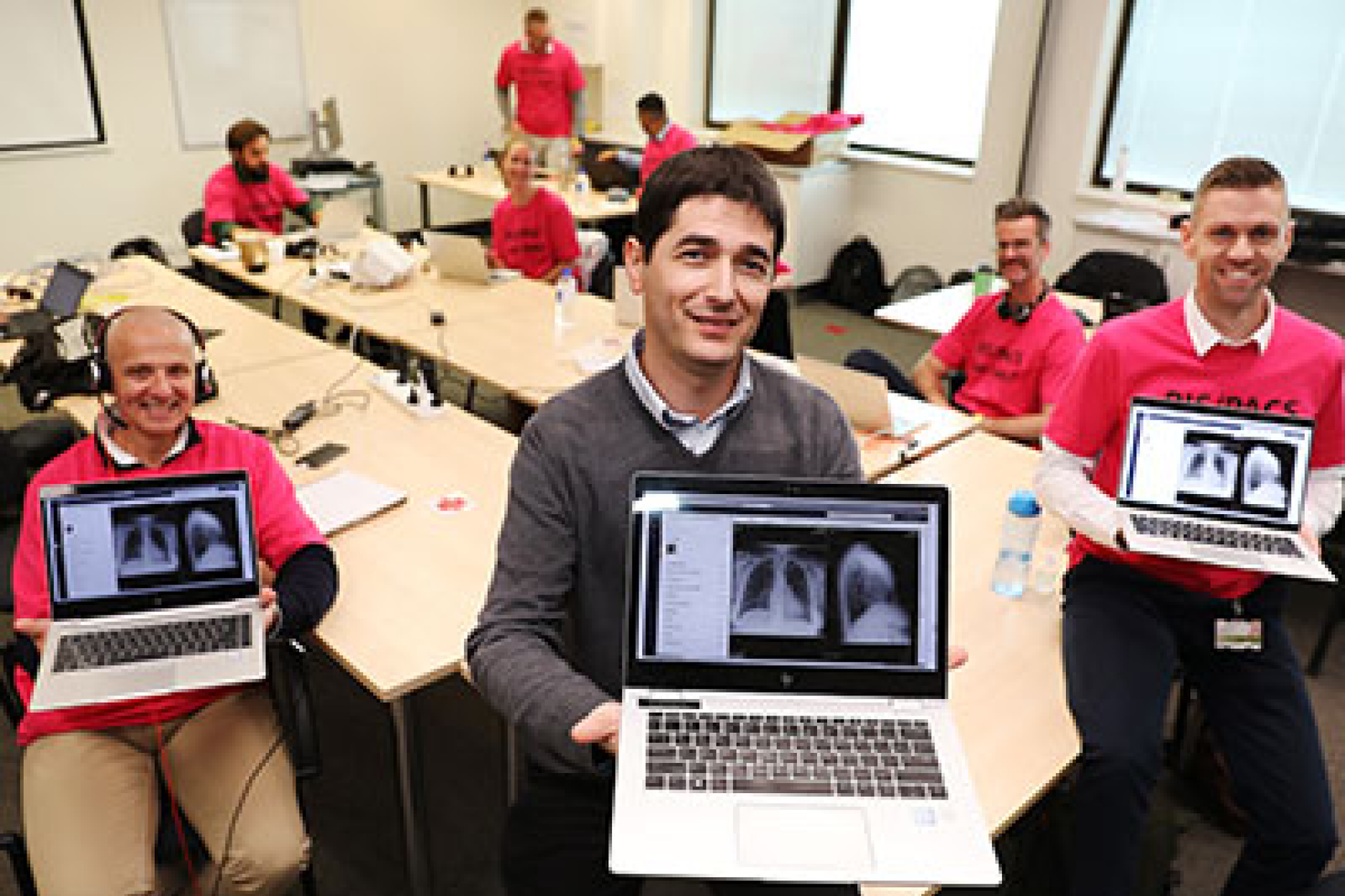Sepsis is a life-threatening condition that can occur when the body fights an infection. Clinicians are trained to identify sepsis, but it can be difficult because sepsis can be masked behind minor visible symptoms.
In Australia, the Sepsis Kills program, initiated by the Clinical Excellence Commission (CEC), supports clinicians in recognising and treating this infection. Application of this program can be difficult on patients in the Emergency Department (ED) waiting room as they are not under rigorous clinical observation.
“Sepsis can be difficult to diagnose in ED. Delays in diagnosing and treating sepsis can result in loss of patient lives,” said Dr Amith Shetty, Senior Staff specialist at Westmead Hospital and Clinical Director of NSW Health.
To complement this existing program, a new tool is being piloted at Westmead Hospital that will help clinicians assess a patient’s risk of sepsis while they are in the ED’s waiting room.

Sepsis tool identifies patients at risk
In collaboration with CEC, Western Sydney Local Health District (WSLHD), Sydney Health Partners, the University of Sydney and NSW Health Pathology, eHealth NSW developed a clinical decision support tool (CDST) called the Sepsis Risk Tool Dashboard that combines a patient’s age, gender and vitals as they are entered into the EMR.
The dashboard passes this information through an algorithm trained on historic data concerning patients with sepsis to create a risk score – thanks to Artificial Intelligence. A risk percentage is calculated for each patient to support the clinician in assessing if sepsis is a risk or not. The more frequent this tool is used to detect risk of sepsis, the better the risk score algorithm will become.
“There are other sepsis detection algorithms, but none focus on the ED waiting room, which is where sepsis is most likely to remain undiscovered. This is what makes our tool unique and ensures that patients who are waiting for care are not missed or deteriorate,” said Dr Shetty.
Emergency nurses key to sepsis detection
“Emergency nurses are the first clinicians with whom waiting patients have contact. If clinical deterioration in sepsis is detected earlier in these patients, then decisions linked to time critical treatments (e.g. antibiotics) can occur much earlier in the patient journey. This can be lifesaving,” said Dr Margaret Murphy, Clinical Nurse Consultant in Emergency Services at Westmead Hospital.
The clinical pilot was launched in September 2022 and will run until December with a possibility of an extension for another three months after that.
Once the clinical go-live is concluded, eHealth NSW and its partners will assess the project’s outcomes. If the data shows an increase in the number of sepsis cases identified, preventing unnecessary deaths or re-admissions, eHealth NSW will explore scaling the solution statewide.



